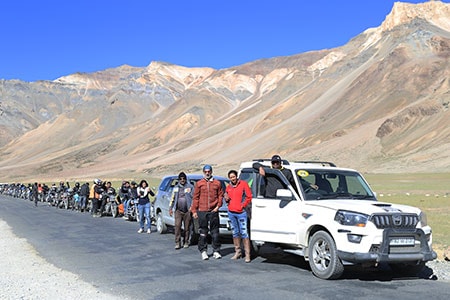Petrol vs Diesel Cars for Leh Ladakh Trip: Which Is Better?
Planning a Leh Ladakh Car Trip? Discover whether a petrol or diesel car is better for high altitudes, rough terrain, fuel access, and comfort.

Planning a Leh Ladakh Car Trip? You’re in for one of the most unforgettable road journeys in India. Snow-capped mountains, winding passes, blue lakes, and open skies Ladakh is magic on wheels. But before you rev up your engine, there’s one common question every road tripper asks:
Should I take a petrol car or a diesel car to Ladakh?
Let’s keep things real and break it down in the simplest, most honest way no jargon, just helpful info.
Why Choosing Between Petrol & Diesel Matters
You might think, “A car is a car, right?” But not when you’re driving at 15,000+ feet, over steep passes and through rough roads where petrol pumps are miles apart. What works in your city might not work the same way in the mountains.
So yes, choosing the right type of fuel can make your Leh Ladakh Car Trip much easier (or much harder).
How Cars Behave at High Altitude
The higher you go, the thinner the air gets and engines need oxygen to burn fuel properly. That’s why car performance changes when you climb to places like Khardung La or Chang La.
-
Petrol cars: They generally handle high altitudes better. The engine doesn’t struggle much, and they give you a smoother ride.
-
Diesel cars: Older diesels can feel sluggish or underpowered in thin air. That said, newer turbo-diesel engines are better at handling altitude.
Road Conditions Is Your Car Up for the Challenge?
Let’s be honest Ladakh roads are not always friendly. One minute you’re cruising on butter-smooth tarmac, and the next you’re bouncing over rocks, mud, or even a stream.
-
Diesel SUVs: This is where they shine. Vehicles like the Scorpio, Thar, or Fortuner love these rough routes. They’ve got more pulling power and better torque which means climbing those steep, bumpy roads feels easier.
-
Petrol cars: Great on smooth roads, but can struggle when fully loaded on rough or slushy terrain.
Fuel Availability & Cost Something You Must Plan For
Once you leave Leh or Manali, fuel stations are rare. Sometimes, you’ll drive 200 km without seeing a single petrol pump.
-
Diesel: More commonly available in remote areas like Nubra or Tso Moriri. It’s also cheaper than petrol, which helps with budget.
-
Petrol: Found easily in big towns but not so much in smaller villages. And yes, it’s more expensive.
Breakdowns & Repairs What If Something Goes Wrong?
No one wants to think about car trouble on a trip. But in Ladakh, being prepared is smart. There aren’t many mechanics outside major towns.
-
Petrol cars: Easier to fix. Local mechanics are more used to petrol engines, and spares are often available.
-
Diesel cars: More rugged, yes but more complex. If something goes wrong, it might be harder to find parts or a mechanic who can fix it.
Being Kind to Ladakh’s Environment
Ladakh is beautiful and also fragile. The region is already facing climate issues, so it's up to all of us to travel responsibly.
-
Petrol engines: Cleaner, with less harmful emissions.
-
Diesel engines: Known to produce more smoke and pollutants, especially older models.
What Kind of Trip Are You Doing?
The right car also depends on your travel vibe:
-
Couple or family trip on main roads? A petrol car will be smooth, quiet, and stress-free.
-
Group of friends, gear-packed, ready for adventure? Go with a diesel SUV. It can handle the weight and rough terrain without breaking a sweat.
One More Tip: Let the Pros Handle It
If this is your first time or you don’t want the headache of permits, fuel planning, or rough roads book through a reliable Leh Ladakh Tour Operator. They usually provide a well-maintained diesel SUV with a local driver who knows every curve and shortcut. It's safer, more relaxed, and great for enjoying the views without worrying about driving.
Final Thoughts: What Should You Choose?
There’s no one-size-fits-all answer. It really comes down to your route, your car, and your travel style.
Choose Petrol if: You’re driving a hatchback or sedan, staying on main roads, or want a cleaner, smoother ride.
Choose Diesel if: You’re going deep into the mountains, carrying heavy bags or people, or want power for rough terrain.
No matter which you choose, your Leh Ladakh Car Trip is going to be unforgettable. Just drive safe, stay respectful to the land, and don’t forget to stop and take in the views they’re absolutely breathtaking.